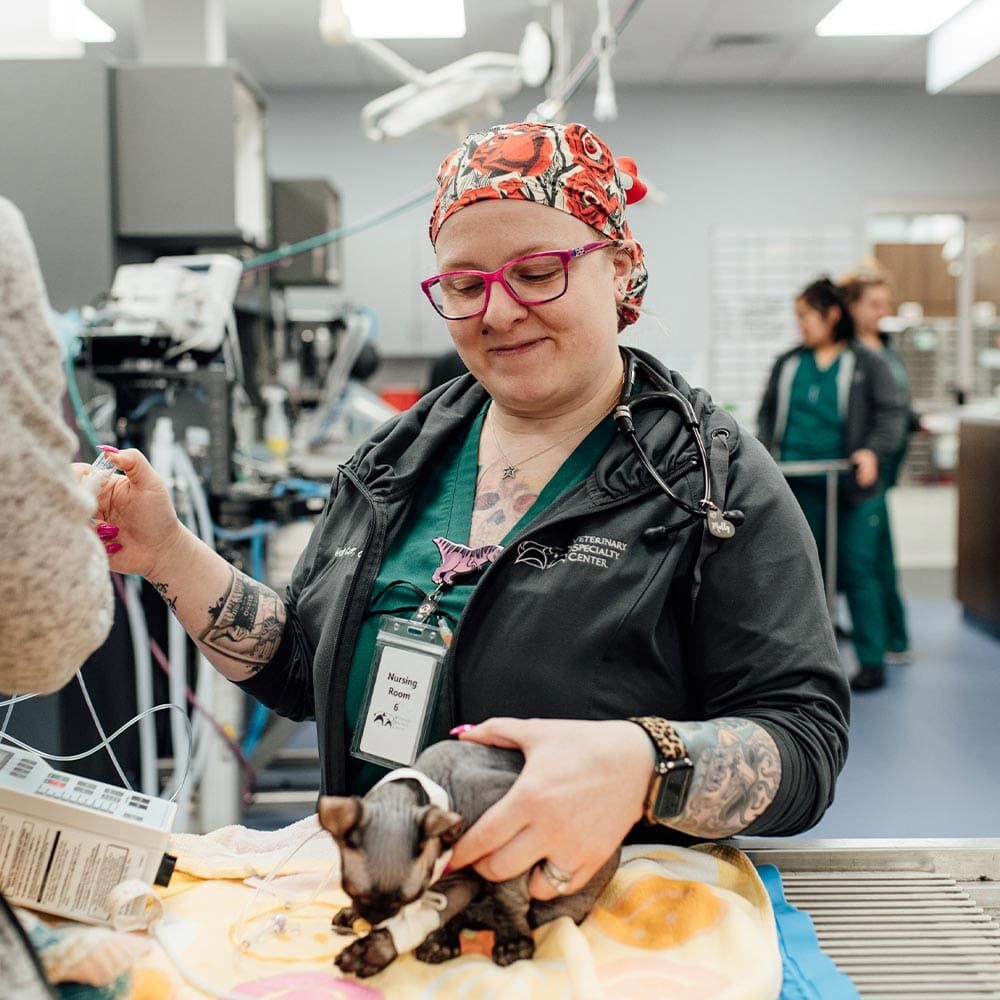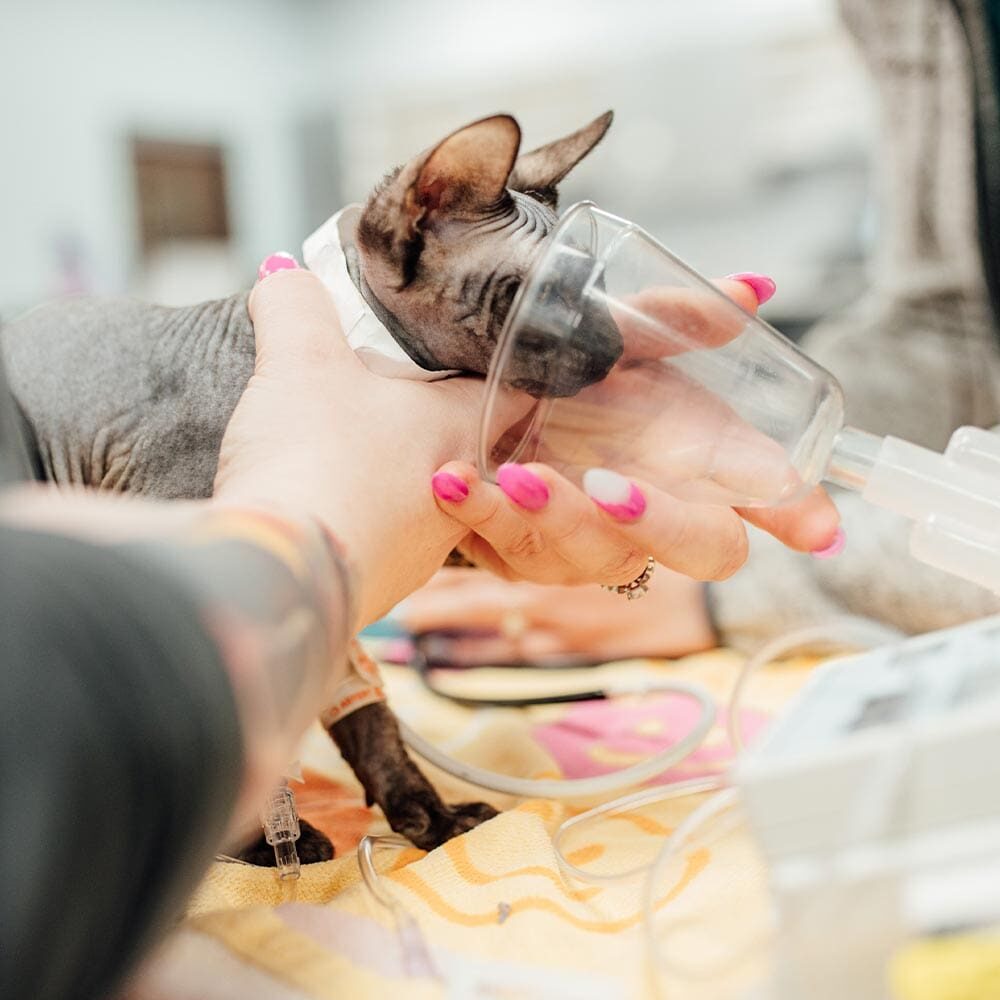Our specialists make veterinary anesthesia procedures as safe and pain-free as possible for their patients. If your pet requires an anesthetic or pain management procedure at Veterinary Specialty Center, we have a full-time anesthesiologist on our team who will be dedicated to your pet’s case. With their advanced training, anesthesiologists understand the distinctive needs of each patient and can tailor unique anesthetic protocols and pain management options to meet their needs. Our anesthesiologist works closely with the surgical, internal medicine, cardiology, imaging, oncology, emergency and critical care, and neurology teams to assist with their patient cases.
What to Expect


Anesthesia is a vital component of many veterinary diagnostic and surgical procedures, ensuring your pet's safety and comfort by inducing unconsciousness, muscle relaxation, amnesia, and pain management. At our hospital, a veterinary anesthesiologist, who has undergone extensive training, oversees the process to see that each patient receives a tailored anesthetic protocol. This process involves pre-procedure examinations, the use of state-of-the-art monitoring equipment, and advanced pain management techniques, both during and after the procedure.
While anesthesia always carries some risk, our team of anesthesiologists works closely with veterinary technicians to minimize those risks, providing individualized care and utilizing advanced monitoring tools to quickly address any concerns. We also offer pain management consultations and maintain detailed electronic records of your pet's anesthetic events, which can be shared with your primary care veterinarian to assist in future procedures.
General Anesthesia
Our team develops tailored protocols that may involve injectable medications, inhalants, or a combination of both. During the procedure, we use an advanced paperless monitoring system to continuously track your pet's heart rate, blood pressure, and other vital signs. This system also helps us manage the medications, fluids, and treatments being administered. By closely monitoring these factors, we can ensure your pet's respiratory, cardiac, organ, and neurological functions are carefully observed throughout the procedure.
Locoregional Anesthesia
A key part of our anesthesia and pain management approach involves using local or locoregional anesthesia for your pet. We administer injectable pain medications in specific areas of the body or near certain nerves (nerve blocks) to minimize the amount of anesthesia needed and reduce the time your pet remains asleep. This also provides immediate pain relief during recovery, helping your pet feel more comfortable after the procedure.
Pain Management
Our veterinarians are skilled in managing both acute and chronic pain in pets. We understand that pain affects different parts of the body in various ways, so we use a multimodal approach. This means we treat pain in multiple areas to minimize the amount of medication needed, reducing the risk of side effects. Each pet receives a personalized pain management plan, which can be tailored to any existing medical condition, such as diabetes or Cushing’s disease.


To prevent acute pain from becoming chronic, we offer several treatment options. These include nerve blocks or epidurals, continuous pain medication infusions (CRIs), non-steroidal anti-inflammatory drugs (NSAIDs), steroids, and gabapentin for moderate to severe pain. By managing short-term pain aggressively, we can often prevent the development of long-term pain. Your pet may need to stay on pain medication for a few weeks as part of this process.
Our in-house anesthesiologists are available for pain consultations and can create a customized pain management plan for your pet. We also assist with perioperative confinement management, helping to ensure your pet rests properly after surgery. Our team can adjust at-home anti-anxiety and sedative medications to find the right combination that works for your dog or cat.
Monitoring Services
Monitoring is critical to maintaining the comfort and safety of each patient. We utilize state-of-the-art monitoring techniques, including:
-
Capnography
-
Electrocardiogram (ECG/EKG)
-
Blood pressure monitoring (invasive and non-invasive)
-
Temperature monitoring
-
Respiratory monitoring
-
Bedside point-of-care monitoring, including arterial blood gas evaluation
-
Fluid and electrolyte monitoring

